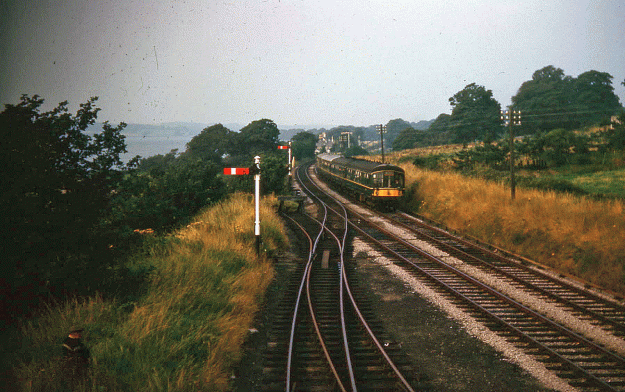

One summer’s evening in 1965 I caught a train from Wingfield Station to my home in Belper. I’d no idea of the timetable and I was lucky that a steam-hauled passenger train showed up promptly. It’s a long walk from South Wingfield to Belper.
The station closed to passengers in 1967, and by the time I photographed it in 1976 it looked distinctly neglected. A succession of private owners allowed it to become a wreck until the South Wingfield Local History Group successfully campaigned to lift its listing from Grade II to Grade II* in 2015, and prompted Amber Valley Borough Council and the Derbyshire Historic Buildings Trust (DHBT) to plan a thorough, practical restoration.
I visited the site in 2021 when work was about to begin, and returned in late October 2023 when the Trust ran a series of public events to celebrate the completion of their work.
The result is impressive: the building is at last not only weatherproof and structurally sound but restored to the highest standard – a remarkable achievement on a site that stands a few feet from a busy main-line railway.
The new lessees will be grateful for the underfloor heating beneath the stone flagstones. Visitors will be fascinated by the detailed recreation of the ladies’ waiting room based on the discovery and salvage of original wallpaper.
When the building begins to earn its keep as office accommodation, public visits will be arranged six times a year.
The DHBT website points out that “Whilst Wingfield Station is not the earliest pioneer railway station to survive, it is one of the least altered surviving examples worldwide”.
As such it has national and international significance, and local volunteers and historians are building a significant resource that will be useful to online visitors: Our Project | dhbt-live (derbyshirehistoricbuildingstrust.org.uk).
Exciting new discoveries about the context of the station in the development of travel, coal-mining and the growth of neighbouring towns and villages and personal stories of people who worked there are already uploaded and the site has considerable potential for further development.
Already the website offers – as far as I know for the first time – images of all of Francis Thompson’s stations for the North Midland Railway at the end of the 1830s, drawn by Samuel Russell.
Without the DHBT and its partners, on the ground and online, almost all of Francis Thompson’s work for the North Midland Railway would have disappeared, and the talent of a young, pioneering architect of the early railway age could not be fully appreciated.











